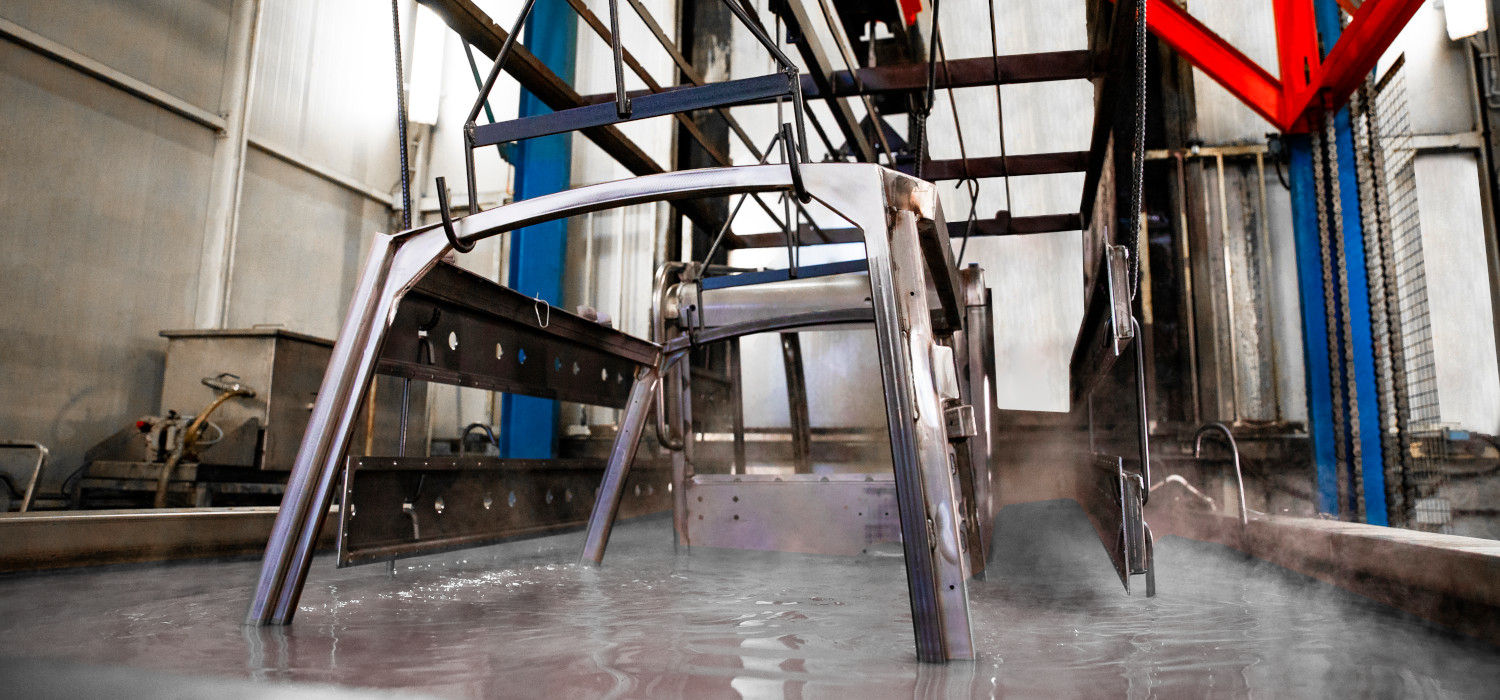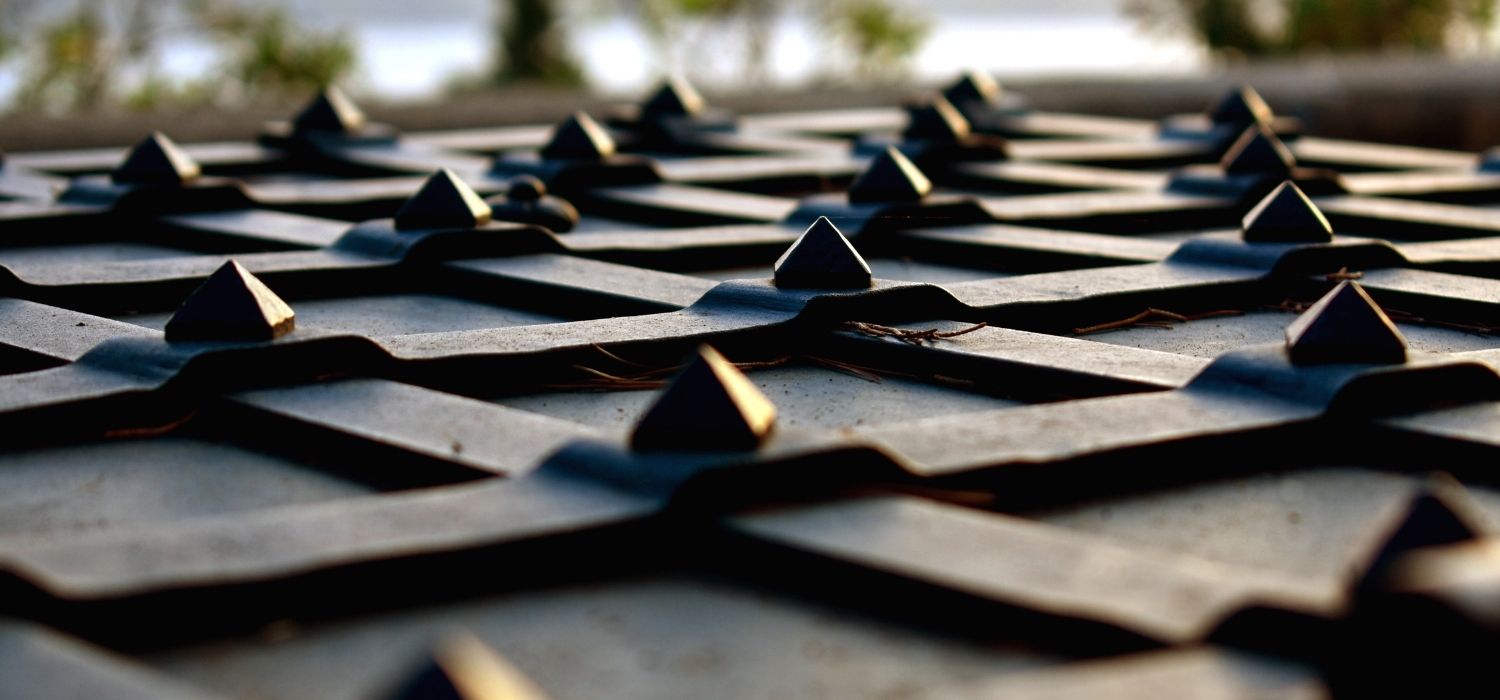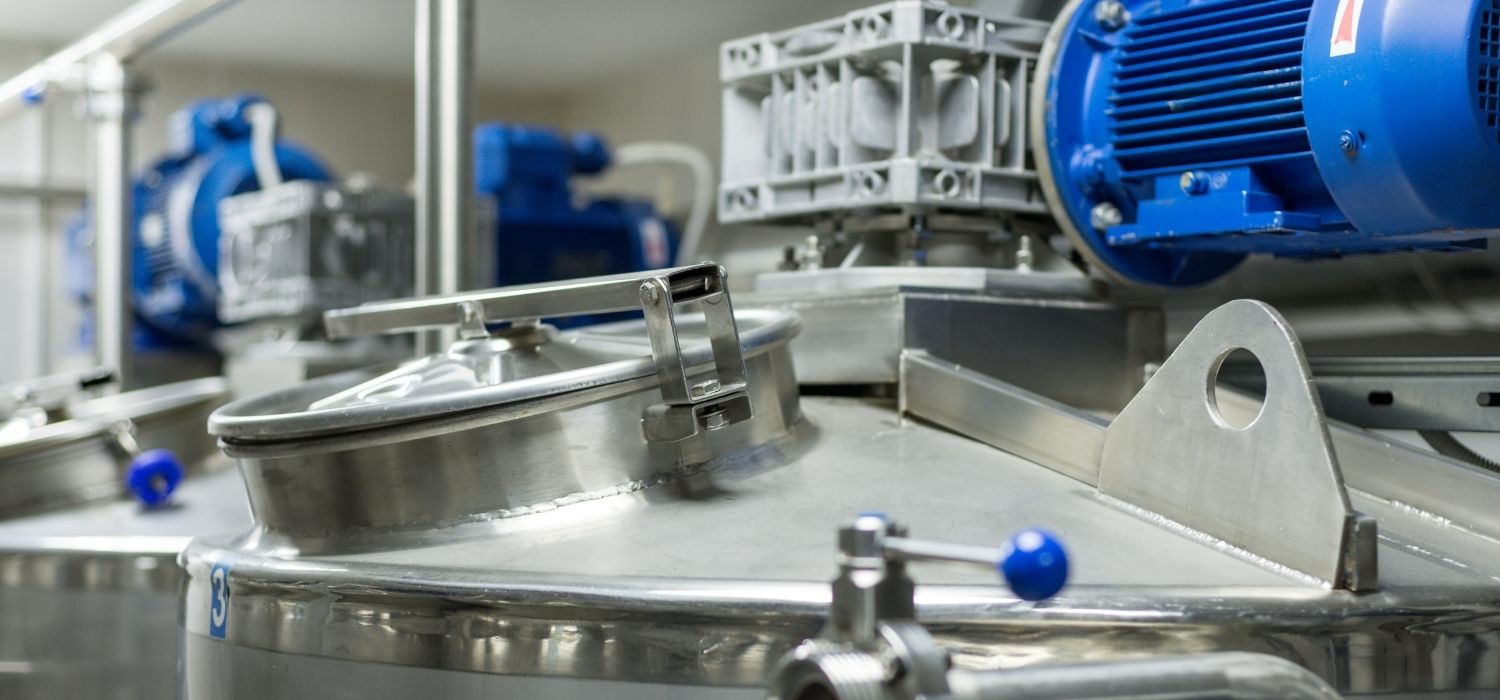Pre-treatment processes for coating are essential to ensure that the surface is perfectly clean and free of impurities. There are different types of pre-treatment, each with its own characteristics, and the difficult thing is to assess which is the best in each case. In the following article we will analyse two of the main methods of surface preparation: degreasing and pickling.
Surface decontamination is a step in the coating process that should not be underestimated: its use ensures that an article is perfectly capable of receiving a surface finish treatment, avoiding possible negative repercussions caused by calamine, oils or oxides.
There are a number of methods for carrying out this stage, the main ones being degreasing and pickling. In the following article we will try to understand what these pre-treatments consist of and how they differ.

What is degreasing
Degreasing is a practice that involves removing grease, oil, grease and dirt from the metal surface. As already mentioned, it is an essential step in the search for perfect treatments: working on an impure surface would result in the application of a coating that is easily removable or does not adhere perfectly to the substrate. There are two types, solvent-based or water-based..
Solvent degreasing
Solvent degreasing is a practice that involves the use of solvents to clean metal surfaces. Over the last few decades it has undergone major changes, especially from an environmental perspective; many compounds that could be used until a few years ago have since been banned because they are harmful to the ozone layer and because of their high risk of flammability.
Since its application requires a lot of solvent and is not easily automated, nowadays it is mainly used for manual cleaning of specific greasy or oily parts for further processing.
Degreasing in the aqueous phase
Currently the most widespread and high-performance method in industrial painting, the so-called aqueous degreasing can actually be broken down into several different categories and classifications:
- Classification by chemical type: perhaps the most widely used classification, it includes acid, neutral, alkaline and emulsion degreasers.
- Classification according to the system: this categorisation concerns the way in which contact between solution and article takes place, which can be by immersion, spray, pressure lance and others.
- Classification according to the accelerant: in this case there can be high/low temperature, electrolytic and ultrasonic degreasers.
In the video, the artefacts come out of the alkaline degreasing tank of our e-coating plant.
The process by which impurities are removed from the metal surface by immersion in aqueous solutions is carried out by means of emulsion. The degreasing solution, e.g. contained in a degreasing tank, has a lower surface tension than water due to the presence of tensoactives, which leads to the removal and detachment of oils and greases from the surface to be cleaned.
The tensoactives are responsible for decreasing the interfacial tension that exists between the water and a certain article that comes into contact with it.
In addition to these, there are so-called builders (e.g. soda, silicates and carbonates) in the solution, which determine the pH and aggressiveness towards metal surfaces. The correct dosage of these elements is crucial for the correct execution of the degreasing process, as this process should not corrode the metal surface, should not compromise its aesthetics and should positively influence subsequent coating treatments.

What is pickling
Another technique related to the refinement of metal surfaces with a view to subsequent painting, pickling is a process by which surfaces are cleaned of oxides.
The chemical method called pickling is usually an immersion process, whereby the article comes into contact with a solution capable of eliminating surface oxides (calamine, laser oxides, etc…) resulting from the activities involved in creating the article, due to the high temperatures required to make the article itself.
Among the most commonly used acids are hydrochloric acid, sulphuric acid and hydrofluoric acid, which are also chosen according to the metal nature of the part to be treated (whether it is made of steel, titanium or aluminium, for example).
When parts are de-oxidised by pickling, they easily undergo oxidation, even if only in contact with air. In order to prevent such oxidation, protective agents and/or corrosion inhibitors are added to the pickling solution.

Differences between degreasing and pickling
Degreasing and pickling are often confused, sometimes even considered similar in industrial practice, when in fact they are two very different processes.
With degreasing, the cleaning process takes place mainly through emulsion, i.e. through contact between the article to be cleaned and the result of two or more liquids which, when shaken, do not mix homogeneously; in other words, the two components that characterise the mixture are distinguishable even after being combined, and it is these components that trigger the physical mechanisms that lead to the cleaning of the surface.
In the second case, that of pickling, real chemical reactions are induced, which lead to the disintegration of the oxides to be removed and, in part, also to the corrosion of the base surface (which is why corrosion inhibitors are required as “protectors”).
In terms of criticality, the two types of pre-treatment in question can present problems mainly linked to the effectiveness of the management of the industrial process. While degreasing is to be considered more flexible and harmless, as it has no etching capacity (i.e. the ability to remove part of the metal surface), pickling presents greater risks linked to the erosion action that can be triggered by the chemical phenomenon in the event of prolonged contact and/or conduction parameters out of range.
Would you like to receive more information? Write to us at info@zoccaratoverniciature.it.

